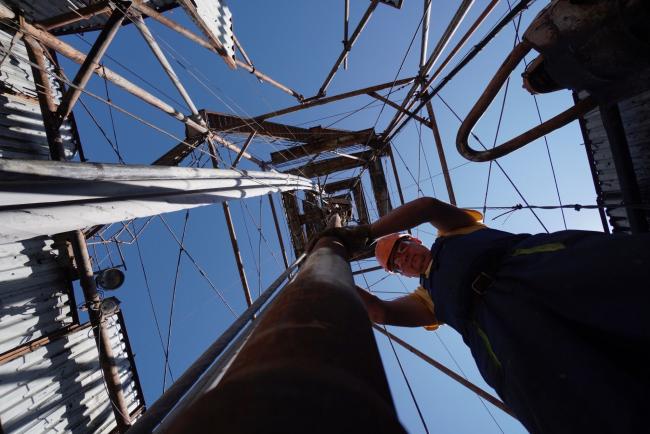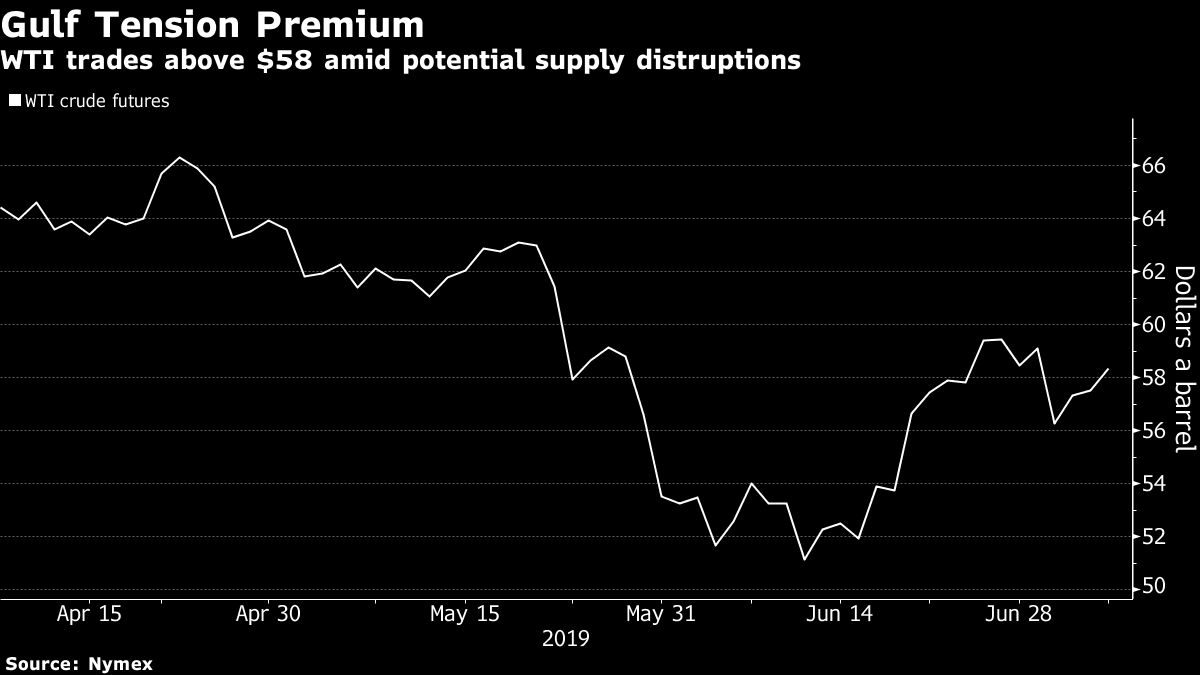(Bloomberg) -- Oil pushed higher as Iran’s threats to retaliate over a seized crude tanker and problems with a North Sea pipeline kept investors wary of potential supply disruptions.
Futures gained as much as 1.7% in New York on Monday. European powers urged Iran to reverse its decision to breach the levels of uranium enrichment permitted under the 2015 nuclear accord. Tensions remain high after British forces seized a tanker carrying Iranian crude near Gibraltar last week, prompting BP (LON:BP) Plc to divert a vessel in the Persian Gulf out of fear it would be targeted in response.
Emergency repairs to Ineos Group Ltd.’s North Sea pipeline system also reduced flows and helped drive prices higher. Oil fell last week as concern that global demand will keep deteriorating outweighed a decision by the Organization of Petroleum Exporting Countries and allies to extend production cuts into 2020. While U.S.-China discussions are starting up again, the White House has warned that reaching an agreement will take time. Investors are also waiting for Federal Reserve Chairman Jerome Powell’s testimony to Congress this week, which may offer clarity on rate cuts.
“The oil market is caught in a bind and does not know which way to go or trend,” said Stephen Brennock, an analyst at PVM Oil Associates Ltd. in London.
West Texas Intermediate oil for August delivery rose 86 cents to $58.37 a barrel on the New York Mercantile Exchange at 10:18 a.m., erasing an earlier loss. The U.S. benchmark lost 1.6% last week.
Brent for September settlement rose 75 cents to $64.98 a barrel on the ICE (NYSE:ICE) Futures Europe Exchange. The global benchmark crude traded at a $6.56 premium to WTI for the same month.
With the Iran nuclear accord in jeopardy, French President Emmanuel Macron is trying to find a diplomatic solution. On Saturday night, France and Iran agreed to resume nuclear talks by mid-July. Meanwhile, U.S. Secretary of State Michael Pompeo said in a tweet Sunday that Iran’s latest expansion of its nuclear program “will lead to further isolation and sanctions.”
The restart of U.S.-China trade talks came after Presidents Donald Trump and Xi Jinping agreed to a second truce in their trade war last month. They have given no time-frame for the discussion or a deadline to strike an agreement. On Friday, an influential blog connected to Chinese state media said the talks will “go backward again” without the removal of U.S. tariffs, echoing the line from the Commerce Ministry’s weekly briefing on Thursday.

